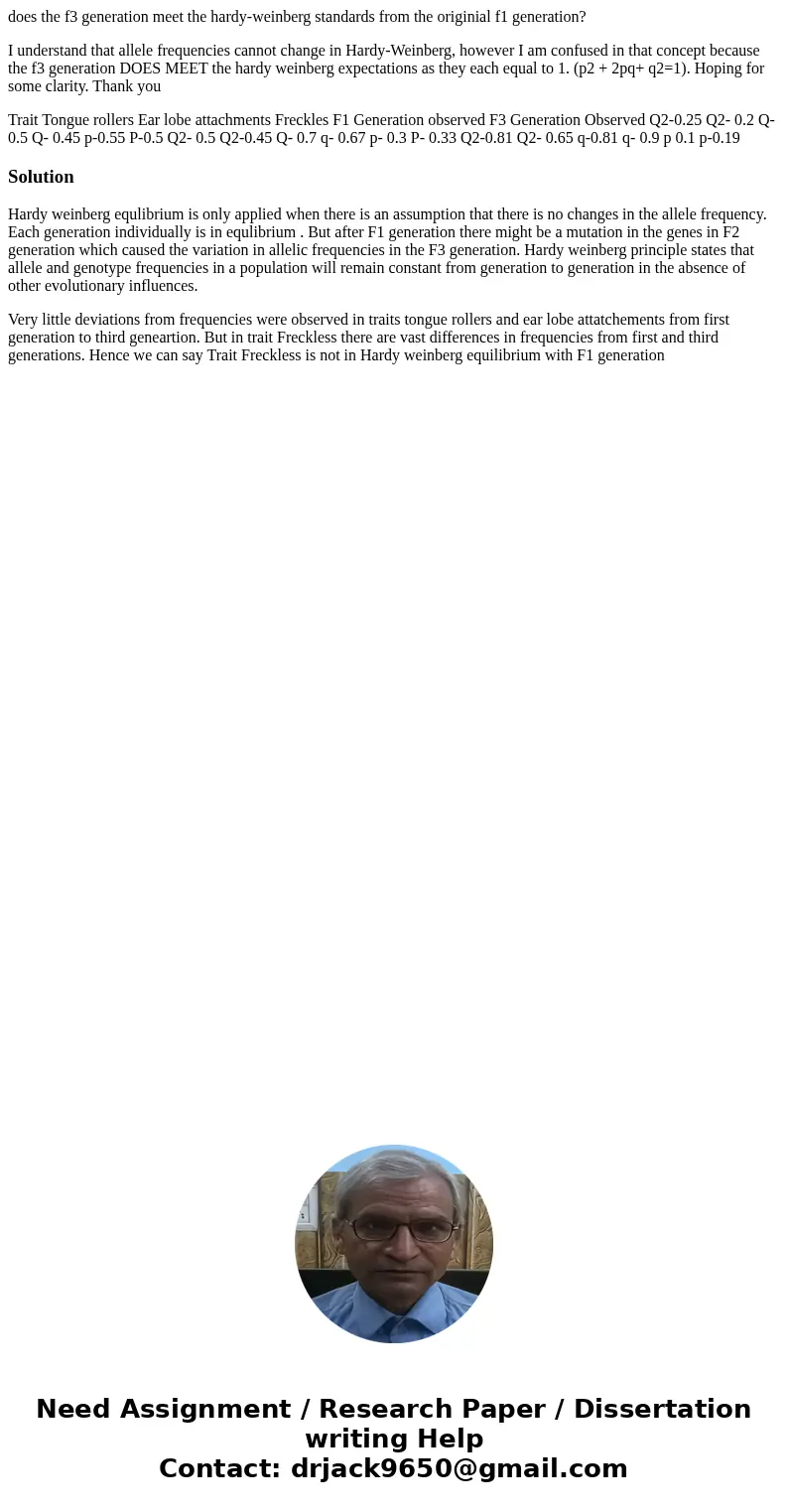does the f3 generation meet the hardyweinberg standards from
does the f3 generation meet the hardy-weinberg standards from the originial f1 generation?
I understand that allele frequencies cannot change in Hardy-Weinberg, however I am confused in that concept because the f3 generation DOES MEET the hardy weinberg expectations as they each equal to 1. (p2 + 2pq+ q2=1). Hoping for some clarity. Thank you
Trait Tongue rollers Ear lobe attachments Freckles F1 Generation observed F3 Generation Observed Q2-0.25 Q2- 0.2 Q- 0.5 Q- 0.45 p-0.55 P-0.5 Q2- 0.5 Q2-0.45 Q- 0.7 q- 0.67 p- 0.3 P- 0.33 Q2-0.81 Q2- 0.65 q-0.81 q- 0.9 p 0.1 p-0.19Solution
Hardy weinberg equlibrium is only applied when there is an assumption that there is no changes in the allele frequency. Each generation individually is in equlibrium . But after F1 generation there might be a mutation in the genes in F2 generation which caused the variation in allelic frequencies in the F3 generation. Hardy weinberg principle states that allele and genotype frequencies in a population will remain constant from generation to generation in the absence of other evolutionary influences.
Very little deviations from frequencies were observed in traits tongue rollers and ear lobe attatchements from first generation to third geneartion. But in trait Freckless there are vast differences in frequencies from first and third generations. Hence we can say Trait Freckless is not in Hardy weinberg equilibrium with F1 generation

 Homework Sourse
Homework Sourse